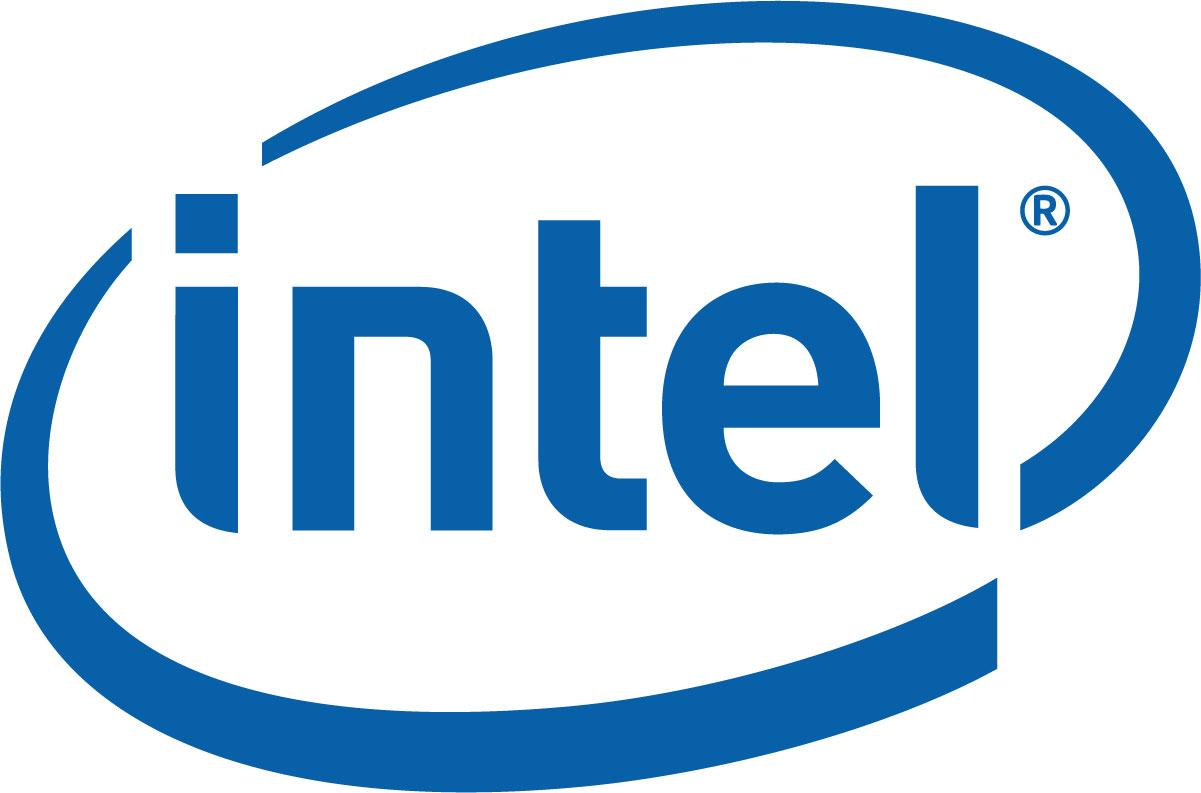MONDAY, DECEMBER, 6TH - 6TH IEEE BROADBAND WIRELESS ACCESS WORKSHOP (Download PDF)
9:00 AM - 9:50 AM, BWA-00: Keynote
Room: Room Brickell North/Center
9:50 AM - 10:30 AM, BWA-01: Session #1: Testbeds and Prototypes
Room: Room Brickell North/Center
Chair: Thomas Michael Bohnert (SAP Research, Switzerland)
The FUTON Prototype: Broadband Communication through Coordinated Multi-Point using a Novel integrated Optical/Wireless Architecture
Fabian Diehm (Technische Universität Dresden, Germany); Joerg Holfeld (Technische Universität Dresden, Germany); Gerhard Fettweis (Technische Universität Dresden, Germany); Nathan J Gomes (University of Kent, United Kingdom); David Wake (University of Kent, United Kingdom); Anthony Nkansah (University of Kent, United Kingdom); Esther Lopez (Acorde SA, Spain)
The growing relevance of wireless communications has been driving the research and development to enable costefficient support of very high data rates to be delivered to a large number of users. The high bandwidth targets for future networks are well reflected in the ITU's call for IMT-Advanced. As interference poses the main limitation in today's networks, cooperative signal processing (often referred to as coordinated multi-point, CoMP) is seen as a key enabler to achieve these targets. However, cooperation among base stations in traditional cellular infrastructures is problematic because interconnections (referred to as backhaul) are often very limited in capacity and investigations on more flexible and cost-efficient future architectures are being undertaken. A promising concept was proposed in the European research project FUTON. It is based on the use of radio-over-fiber (RoF) technology to create a distributed antenna system (DAS) that is capable of supporting the high requirements of future wireless networks. In the realm of the project, a prototype system was built as a proof of concept. In this contribution, we present measurement results from the prototype system that demonstrate the potential of the FUTON architecture.
Practical Considerations for Channel Assignment in Wireless Mesh Networks
Peter Dely (Karlstad University, Sweden); Marcel Cavalcanti de Castro (Karlstad University, Sweden); Andreas J. Kassler (Karlstad University, Sweden); Arild Moldsvor (Karlstad University, Sweden); Sina Soukhakian (Karlstad University, Sweden)
In multi-radio wireless mesh networks (WMNs) several radios can operate within one node simultaneously on different channels. Due to frequency selective fading and varying output powers of WLAN cards the received signal strength on channels in the U-NII band can differ by several dB. Furthermore, power leakage from neighboring channels in the frequency spectrum can cause adjacent channel interference (ACI). Using a IEEE 802.11a testbed, we experimentally evaluate the achievable throughput of a multi-radio mesh network in a string topology under the impact of ACI and channel heterogeneity. Our results show that for low PHY rates the channel separation is a good indicator for throughput. However, for high PHY rates the propagation properties of a specific channel also need to be considered. Based on the results we provide recommendations for designing channel assignment algorithms for IEEE 802.11-based WMNs.
11:00 AM - 12:30 PM, BWA-02: Session #2: Cognitive Radio, VANET and Network Coding
Room: Room Brickell North/Center
Chair: Yevgeni Koucheryavy (Tampere University of Technology, Finland)
Efficient Spectrum Sharing with Autonomous Primary Users: Distributed Dynamic Spectrum Leasing (D-DSL)
Georges El-Howayek (University of New Mexico, USA); Sudharman K Jayaweera (University of New Mexico, USA)
In this paper we introduce a new architecture for dynamic spectrum sharing called the distributed dynamic spectrum leasing (D-DSL) and a game theoretic framework for its implementation on a cognitive radio network. In D-DSL, it is assumed that each channel is assigned to a primary user who may lease the channel to secondary users. The spectrum owners can thus dynamically adjust the amount of interference they are willing to tolerate from the secondary users. On the other hand, the secondary users compete with each other in order to achieve maximum possible Quality of Service without violating the interference cap (IC) imposed by the primary users on each channel. The secondary users are allowed to transmit in more than one channel simultaneously. Under these conditions in addition to the competition among secondary users, the primary users also compete with each other to let more secondary users to access their channels. We establish conditions for the system to reach an equilibrium and analyze the equilibrium performance. It is shown that the performance of the secondary system improves by increasing the availability of primary channels.
A Robust Power Control Method for Cognitive Radio Networks
Naser Movahhedinia (University of Isfahan, Iran); Ali Tizghadam (University of Toronto, Canada); Alberto Leon-Garcia (University of Toronto, Canada)
One of the issues in Cognitive Radio Networks (CRNs) is how to manage the transmit powers of the secondary users to achive the best network performance while preserving the interference on the primary users below an acceptable level. Link failures, node mobility and changing interference level make robustness a challenging issue in CRN. In this paper, regarding robustness as the optimization criterion for power management, we consider CRN as a weighted graph with the link capacities as weights to minimize a recently developed concept called Network Criticality (NC), with primary users' interference requirements as the constraint. Our method is carried out on a decentralized strategy distributed in secondary nodes. We show that the proposed method not only provides robustness and stability to the power control mechanism but also improves network performance in terms of capacity increase.
A Performance Comparison of Cognitive Versus Traditional Radio Networks
Arash Azarfar (Ecole Polytechnique de Montréal, Canada); Jean-François Frigon (Ecole Polytechnique de Montreal and GERAD, Canada); Brunilde Sanso (Ecole Polytechnique de Montreal, Canada)
Although the main objectives of dynamic spectrum access and cognitive radios are to solve the problem of spectrum scarcity and usage inefficiency, we show in this paper that such capabilities can also be used to improve other performance metrics in wireless networks. We compare the performance of a Cognitive Radio (CR) network using nodes that are able to sense the spectrum and change their operating frequency in case of link failure with a Traditional Radio (TR) with static channel access and no frequency switching capability. The improvement that can be obtained by substituting TR to CR technology is evaluated for the blocking probability, utilization and system occupancy performance metrics based on a Twostate Markov chain channel model as a function of the number of users, number of channels, arrival rate, restoration time and channel occupancy. We show that there is a strong interaction between these parameters and that CR technology performs better in slowly time-varying channels while TR technology is more appropriate in fast changing channels.
Performance of a Double Cluster Head Routing Scheme in a Motorway Environment
Bilal R Qazi (University of Leeds, United Kingdom); Adnan Muhtar (University of Leeds, United Kingdom); Wanod Kumar (University of Leeds, United Kingdom); Jaafar Elmirghani (University of Leeds, United Kingdom)
To restore the performance of the system due to the failure of a BS, we propose a hybrid vehicular communication system which introduces a novel double cluster head (DCH) routing scheme. Using vehicular traces from loop Ids on the M4 motorway in the UK, the performance of the system is evaluated and compared with the single cluster head (SCH) routing scheme under different configurations. Even though, clustering techniques address the problem of scalability, excessive overheads present a challenge especially to the cluster heads in the process of cluster formation/deformation, cluster update and cluster head selection. To balance the load of the cluster head and improve the inter-cluster communication, we propose a double cluster head (DCH) routing scheme which uses more bits to choose one more cluster head but the performance of the system is significantly improved. To evaluate the performance and compare it with the single cluster head (SCH) routing scheme, we have considered a scenario where a BS failure causes a significant amount of loss in terms of higher packet dropping probability, higher average access delay and lower throughput.
Efficient Resource Minimization Scheme for Network Coding-Assisted Multicast System
Seyed Amin Hejazi (Simon Fraser University, Canada); Muhammad Naeem (Simon Fraser University, Canada); Daniel Lee (Simon Fraser University, Canada)
In this paper, we consider the problem of minimizing the resources used for network coding (MRUNC) while achieving the desired throughput in a multicast system. The problem of minimizing the number of network coding links is NP-hard. In this paper we propose a low- complexity Estimation of Distribution Algorithm (EDA) for MRUNC. Our EDA is applicable to the network with and without cycles. The numerical results show the effectiveness of the proposed method over previously proposed algorithms
2:00 PM - 3:30 PM, BWA-03: Session #3: RRM and MIMO
Room: Room Brickell North/Center
Chair: Andreas J. Kassler (Karlstad University, Sweden)
On Opportunistic Power Control for MIMO-OFDM Systems
Gabor Fodor (Ericsson Research, Sweden); Norbert Reider (Budapest University of Technology and Economics, Hungary)
When fast and accurate channel state information (CSI) at the transmitter is available, opportunistic power control (OPC) is an attractive alternative to signal-to-interference-and-noise ratio (SINR) target following approaches, because it maximizes throughput by taking advantage of fast channel variations. On the other hand, in multiple-input multiple-output (MIMO) systems, open loop schemes such as Alamouti space time coding and spatial multiplexing (SM) exploit channel diversity without accurate CSI. In an attempt to answer the question whether OPC is worth the pain of obtaining fast CSI, in this paper we evaluate the gains of OPC for the downlink of a system employing MIMO with Alamouti and SM. We formulate the OPC problem as a throughput maximization task subject to a power budget and fairness constraints. We solve this task by the Augmented Lagrangian Penalty Function (ALPF) and find that without fairness constraints, OPC in concert with SM provides superior throughput. With tight fairness constraint, Alamouti along with equal power allocation becomes a viable alternative to the SM OPC scheme.
Active-Mode Power Optimization in OFDMA-Based Wireless Networks
Sergey Andreev (Tampere University of Technology, Finland); Yevgeni Koucheryavy (Tampere University of Technology, Finland); Nageen Himayat (Intel Corporation, USA); Pavel Gonchukov (St. Petersburg State University\of Aerospace Instrumentation, Russia); Andrey Turlikov (Saint-Petersburg State University of Aerospace Instrumentation, Russia)
Energy efficiency is increasingly important for wireless cellular systems due to the limited battery resources of mobile clients. While modern cellular standards emphasize low client battery consumption, existing techniques do not explicitly focus on reducing power that is consumed when a client is actively communicating with the network. Based on high data rate demands of modern multimedia applications, active-mode power consumption should also be an important consideration for wireless system design and standards development. Recent work in this area shows that radio resource management schemes optimizing energy efficient metrics can provide considerable reduction in client power consumption. In this paper, we evaluate the performance of such techniques using realistic cellular system simulation model. Specifically, we focus on the emerging fourth generation IEEE 802.16m standard. Our simulation results indicate that energy efficient techniques continue to provide considerable power savings, even when accounting for realistic system parameters and channel environments.
CSI Feedback for Closed-Loop MIMO-OFDM Systems based on B-splines
Ren-Shian Chen (National Cheng-Kung University, Taiwan)
Communication systems with multiple antennas and multiple carriers prevails recently due to their outstanding capacity and error performance. When the fed-back channel state information (CSI) is available, the transmitter can apply the precoding on the transmitted signal to enhance the performance. The beamforming vectors, which are based on the CSI, can be applied in the precoded multiple-input multiple-output (MIMO) system. Some algorithms of CSI reduction and efficient feedback have been proposed. However, the power allocation, antenna selection, and multi-mode precoding, which can be applied in the precoder, are also important issues for increasing the channel capacity and improving the performance. To implement a multifunction precoder which can exercise not only the beamforming but also the power allocation, antenna selection, and so on, the receiver needs to feed back the estimated channel responses (CRs) to the transmitter. In this paper, we propose a feedback algorithm based on the B-spline models of CRs variation across subchannels. We determine the coefficients of the B-splines based on the least squares fitting approach. The coefficients of the B-splines are fed back to the transmitter for the CRs reconstruction. In the feedback process, we also apply efficient quantization algorithms based on the Gaussian quantization (GQ). The simulation results verify that the proposed B-spline model has smaller coefficients variances, and this leads to smaller mean-squares error than the Polynomial model [10] when using fewer number of feedback bits. The simulation results also show that the proposed algorithm can attain the upper bound of channel capacity and result in outstanding error performance for the precoded MIMO-OFDM system in the frequency-selective channel.
System Level Evaluation of TDD based LTE-Advanced MIMO-OFDMA Systems
Harri Pennanen (University of Oulu, Finland); Tuomas Haataja (University of Oulu, Finland); Jouko Tapio Leinonen (Universtity of Oulu, Centre for Wireless Communications (CWC), Finland); Antti Tölli (University of Oulu, Finland); Matti Latva-aho (UoOulu, Finland)
This paper presents system level downlink performance evaluation results for the TDD based LTE-Advanced networks utilizing some of the most recent technology for mobile systems. The main enhanced technology components used in the systems include multi-user (MU)-MIMO, intra-site coordinated multipoint (CoMP) transmission and space-time-frequency proportional fair scheduling. Performance comparison between single-user (SU)-MIMO, MU-MIMO and MU-MIMO with intra-site CoMP OFDMA systems is presented. System level results show that MU-MIMO and MU-MIMO with intra-site CoMP systems exceed the downlink cell-average and cell-edge user throughput requirements of the IMT-Advanced systems set by ITU-R in urban micro ITU channel model. Furthermore, it is shown that MU-MIMO system with intra-site CoMP outperforms uncoordinated MU-MIMO system in terms of throughput. Hence, intra-site CoMP can be considered as a key technique to further improve the throughput performance of LTE-Advanced.
Sum-Rate Maximization for Multiple Users in Partial Frequency Reuse Cellular Networks
Bujar Krasniqi (Vienna University of Technology, Austria); Martin Wolkerstorfer (Telecommunications Research Center Vienna (FTW), Austria); Christian Mehlführer (Vienna University of Technology, Austria); Christoph F Mecklenbräuker (Vienna University of Technology, Austria)
In this paper we apply constrained optimization techniques to optimally allocate the bandwidth and power to the users in a cellular network. We utilize partial frequency reuse with multiple users in the full and partial frequency regions as inter-cell interference mitigation technique. We show that the non-convex sum-rate maximization problem becomes convex under some simplifying assumptions. Moreover, an efficient and problem specific algorithm is developed to solve the problem for a fixed bandwidth allocation. Our results show that in the optimum the full amount of power is assigned to the users. We further prove that even without simplifications, the nonconvex problems of maximizing the minimum rate among users and minimizing the sum-power can be transformed into convex optimization problems.
4:00 PM - 5:30 PM, BWA-04: Session #4: Coding for MIMO Systems
Room: Room Brickell North/Center
Chair: Gabor Fodor (Ericsson Research, Sweden)
Performance Enhancement in Limited Feedback Precoded Spatial Multiplexing MIMO-OFDM Systems by Using Multi-Block Channel Prediction
Shichuan Ma (University of Nebraska-Lincoln, USA); Deborah Duran-Herrmann (University of Nebraska-Lincoln, USA); Yaoqing (Lamar) Yang (University of Nebraska-Lincoln, USA); Hamid Sharif (University of Nebraska-Lincoln, USA)
Linear precoding plays an important role in the spatial multiplexing multiple-input multiple-output (MIMO)-orthogonal frequency-division multiplexing (OFDM) systems which are considered one of the primary candidates for the physical-layer techniques in the next-generation wireless communication systems. It requires the channel state information (CSI) at the transmitter to adapt the transmitted signal to the channel conditions. In most communication systems, the CSI is estimated at the receiver and fed back to the transmitter. However, the error performance in a precoded MIMO-OFDM system is significantly degraded due to the long feedback delay that causes the outdated CSI at the transmitter. In this paper, a novel approach using multi-block linear channel prediction is proposed to combat the feedback delay in a limited feedback precoded spatial multiplexing MIMO-OFDM system. The time-varying channel is modeled by autoregressive (AR) process, whose coefficients are obtained by linear minimum mean square error (MMSE) method. To increase prediction range, block-based channel samples are used to establish the AR model, and multiple blocks are employed to iteratively predict the CSI. Simulation results show that the performance degradation caused by large feedback delay can well be mitigated.
Coordinated Multi-Point Transmission with Limited Feedback
Jing Jin (Beijing University of Posts and Telecommunications, P.R. China); Qixing Wang (China Mobile Research Institute (CMRI), P.R. China); Chongsheng Lin (Wireless Research Center, Beijing University of Posts and Telecommunications, P.R. China); Hongwen Yang (Beijing University of Posts and Telecommunications, P.R. China); Yafeng Wang (Beijing University of Posts and Telecommunications, P.R. China)
Coordinated multi-point (CoMP) transmission is a promising technique to suppress inter-cell interference (ICI) in LTE-Advanced system. With perfect channel state information (CSI) at the transmitter, joint beamforming methods can be used to completely cancel ICI and significantly improve the spectrum efficiency. However, in FDD system, the transmitter can't obtain perfect CSI to eliminate ICI, for it's unreasonable to feed back the full channel information through the capacity limited feedback channel. In this paper, we propose a channel compression feedback scheme for FDD-CoMP system and adopt joint beamforming methods to partially mitigate ICI. In order to provide multi-cell spatial channel information and improve the feedback efficiency, the row and column number of the channel matrix are compressed using eigenmode of the user and codebook defined for LTE, respectively. Then, joint block diagonalization beamforming algorithm is applied at the transmitter to further eliminate ICI. Simulation results demonstrate that CoMP with the proposed feedback method can greatly improve the average and cell-edge spectral efficiency compared to the traditional cellular FDD system.
Adaptive Decoding for Space Time Codes with Imperfect Channel Estimation, Using the Bootstrap Algorith
Amir Laufer (New Jersey Institute of Technology, USA); Yeheskel Bar-Ness (New Jersey Institute of Technology, USA)
Space time coding is a powerful technique to exploit transmitter diversity. Nevertheless, to enjoy its full potential performance, a perfect knowledge of the channel state information should be available at the receiver. Since even small channel estimation error results in severe performance lose, a long, rate consuming training sequences should be used to minimize these estimation errors. Hence, presenting an undesired trade-off between rate and performance. Applying the "bootstrap" algorithm; an adaptive decoder, can mitigate the effect of estimation errors, hence enables a way out of this deadlock, by achieving high performance transmission while reducing the required length of the training sequences.
Uplink Cooperation in Wireless Networks With NICE Processing
Mehmet Kemal Karakayali (Bell Labs, Alcatel-Lucent, USA); Krishna Balachandran (Bell Labs, Alcatel-Lucent, USA); Joseph H. Kang (Bell Labs, Alcatel-Lucent, USA); Kiran M Rege (Bell Laboratories, Alcatel-Lucent, USA)
There has been a lot of recent interest in the potential of inter-base station cooperation techniques to manage excessive out-of-cell interference in evolving cellular networks. In this paper, we propose and describe a signal processing approach based on a novel Network Interference Cancellation Engine (NICE), which opportunistically cancels dominant out-of-cell interferers by exchanging decoded dominant interferer data among cooperating cells and reconstructing interfering signals. Simulation results with NICE processing in cellular networks show that substantial improvements in signal-to-interference-plus-noise ratio may be achieved over current non-cooperative multi-antenna receiver processing techniques while allowing backhaul overhead to be reduced by approximately a factor of 50 relative to joint processing techniques employing the exchange of complex-valued received signal samples.
QRD-Based MU-MIMO Transmission Scheme Towards Evolved LTE TDD System
Xiaolin Hou (DOCOMO Beijing Communications Laboratories Co., Ltd, P.R. China); Zhan Zhang (DoCoMo Beijing Labs., P.R. China); Hidetoshi Kayama (NTT DOCOMO, INC., Japan)
With the active evolvement of 3GPP long term evolution (LTE) system, advanced multi-user multiple-input multiple-output (MU-MIMO) transmission schemes attract more and more interests in engineering field. However, in order to bring advanced MU-MIMO techniques from theory to practice, there are two major obstacles to overcome, i.e., how to obtain accurate channel state information at the transmitter side (CSIT) and how to achieve high spectrum efficiency with low computational complexity. In this paper, we propose QR decomposition (QRD) based MU-MIMO transmission scheme towards evolved LTE time division duplex (TDD) system, which can orthogonalize the multiple data streams to/from multiple users in downlink/uplink with TDD ping-pong transmission to realize high spectrum efficiency, thanks to the accurate downlink/uplink CSIT obtained via the channel reciprocity and the downlink/uplink reference signal (RS) in evolved LTE TDD system. Furthermore, it only needs low-complexity QRD operation, which can simplify the transceiver structure significantly to facilitate its implementation in practice. Computer simulation results demonstrate the effectiveness of our proposal and suggest it a promising candidate of advanced MU-MIMO transmission schemes towards evolved LTE TDD system.
Designs of precoding for LTE TDD using cell specific reference signals
Fan Sun (Aalborg University, Denmark); Lu Lu (Royal Institute of Technology, Sweden); Troels B. Sørensen (Aalborg University, Denmark)
We design non-codebook-based Multiple-Input Multiple-Output (MIMO) precoding schemes using multiple cell-specific reference signals patterns for the time division duplex (TDD) mode of LTE, where channel reciprocity could be exploited. Previously proposed non-codebook-based precoding scheme typically uses UE specific reference signals for demodulation. Cell specific reference signals are however always allocated for the transmission of common control signalling, mobility measurements and downlink channel quality measurements. In order to save the resources occupied by UE specific reference signals, and to simplify UE implementation, a precoder-estimation scheme and a codebook-assisted scheme are designed. The codebook-assisted scheme has the novelty of using a codebook in equalization. Link throughput simulations indicate that the codebook-assisted scheme is preferable compared to the precoder-estimation scheme and the scheme using UE specific reference signals in the scenario with moderate UE velocity.
9:00 AM - 10:30 AM, BWA-1P: Poster Session I
Room: Room Brickell South
Chair: Thomas Michael Bohnert (SAP Research, Switzerland)
Cell Collaborative Zones for 4G Cellular Systems
Zander Zhongding Lei (Institute for Infocomm Research, Singapore); Francois Chin (Institue for InfoComm Research, Singapore); Tony Q. S. Quek (Institute for Infocomm Research, Singapore); Edward K. S. Au (Huawei Technologies, P.R. China)
In this paper, we consider the multiple base station cooperative transmission, a new technology being developed to lift the interference limits on wireless network. In practice, the biggest challenge facing multiple base station collaboration is the stringent requirement of the high-speed backbone to enable information exchange, especially for large deployment. We address this backbone issue and propose to define a collaborative zone within each cell. Only those users within the collaborative zone will be served by multiple coordinated base stations. Whereas users outside the collaborative zone will be served by a single base station as in a conventional non-collaborative scheme. The criterion defining the collaborative zone is proposed and designed in such a way that the users outside the collaborative zone sacrifice only marginal potential collaboration gain in terms of achievable rates. Since the amount of information to be exchanged will be a square function of the number of users served by the collaborative base stations, the introduction of the collaborative zone can reduce the backhaul overhead significantly.
Practical Aspects of Broadband Access for Rural Communities using a Cost and Power Efficient Multi-Hop / Relay Network
Faisal Darbari (University of Strathclyde, Glasgow, United Kingdom); Robert Stewart (University of Strathclyde, United Kingdom); Malcolm Brew (Steepest Ascent Ltd, United Kingdom); Stephan Weiss (University of Strathclyde, United Kingdom)
Rural communities enjoy often no or only limited broadband access.This paper reports on a testbed installed in the rural Scottish Highlands and Islands, using wind power to support a very cost and power efficient multihop network of self-sufficient relay-nodes. We discuss a number of design issues, such as the radio propagation environment in this rugged terrain, and various system aspects from antenna selections to MAC layer design. Some channel quality and throughput measurements will be presented, enabling services such as BBC iPlayer or future smart grid communications
Joint Channel Estimation and Equalization for OFDM based Broadband Communications in Rapidly Varying Mobile Channels
Habib Senol (Kadir Has University, Turkey); Erdal Panayirci (Kadir Has University, Turkey); H. Vincent Poor (Princeton University, USA)
This paper is concerned with the challenging and timely problem of channel estimation for orthogonal frequency division multiplexing (OFDM) systems in the presence of frequency selective and very rapidly time varying channels. In OFDM systems operating over rapidly time-varying channels, the orthogonality between subcarriers is destroyed leading to inter-carrier interference (ICI) and resulting in an irreducible error floor. The band-limited, discrete cosine serial expansion of low-dimensionality is employed to represent the time-varying channel. In this way, the resulting reduced dimensional channel coefficients are estimated iteratively with tractable complexity and independently of the channel statistics. The algorithm is based on the expectation maximization-maximum a posteriori probability (EM-MAP) technique leading to a receiver structure that also yields the equalized output using the channel estimates. The pilot symbols are employed to estimate the initial coefficients effectively and unknown data symbols are averaged out in the algorithm in a non-data-aided fashion. It is shown that the computational complexity of the proposed algorithm to estimate the channel coefficients and to generate the equalized output as a by-product is ~ O(N) per detected symbol, N being the number of OFDM subcarriers. Computational complexity as well as computer simulations carried out for the systems described in WiMAX and LTE standards indicate that it has significant performance and complexity advantages over existing suboptimal channel estimation and equalization algorithms proposed earlier in the literature.
The Achievable Generalized Degrees of Freedom of Interference Channel with Orthogonal Relay
Song Zhao (Beijing University of Posts and Telecommunications, P.R. China); Tiankui Zhang (Beijing University of Posts and Telecommunications, P.R. China); Zhimin Zeng (Beijing University of Posts and Telecommunications, P.R. China)
The generalized degrees of freedom (GDOF) of the interference channel with orthogonal relay (ICOR) was studied in this paper. ICOR is a modified ICR model where each of the forward and backward relay channels is orthogonal with the rest channels. In this paper, the achievable GDOF of ICOR was obtained and the power allocation scheme at the source that can maximize the GDOF was given. The relation between the GDOF of the whole and the parts of the ICOR was also analyzed, where the later are namely the interference channel (IC) part and the orthogonal relay channel (ORC) part. The results showed that the GDOF of the IC part and the ORC part are balanced by the power allocation scheme and the optimum power allocation is affected by the channel parameters of the source-to-destination channel and the interference channel.
An Improved MMSE-Based MIMO Detection using Low-Complexity Constellation Search
Cheng-Yu Hung (Academia Sinica, Taiwan); Wei-Ho Chung (Academia Sinica, Taiwan)
The maximum likelihood (ML) detection for multiple-input multiple-output (MIMO) system achieves the optimal performances at the cost of high computational complexities, while the linear detectors attain low complexities with degraded performances. In this paper, we propose two low-complexity detection schemes based on the minimum-mean-square-error (MMSE) detection for MIMO systems. Using on the MMSE-detected data as the starting point, the first scheme searches the constellation subspace using the ML criterion. To further reduce the complexity, the second scheme selects the constellation subspace for search using the reformulated ML criterion. Simulation results show the substantial performance improvements compared to the MMSE detection, with only slightly increased complexities.
Impacts of Fast Flat Fading Channel on the Performance of a Primary-Secondary User Power Control Game for Cognitive Radios
Mahmoud A . Alayesh (University of New Mexico, USA); Nasir Ghani (University of New Mexico, USA)
Power control is considered to be an important concern in cognitive radio networks in which secondary users opportunistically compete to access spectrum allocated to primary users. However, most existing studies in this regard have ignored the impact of primary users and only considered the interactions between secondary users. In this study a novel realistic primary-secondary game-theoretic scheme was proposed in which primary users are rewarded for sharing their spectrum with secondary users and hence allow them to achieve energy efficient transmissions. The proposed model is analyzed for both Rician and Rayleigh fast flat fading channels where closed-form expressions are also derived for the average utility functions and the existence of a unique Nash equilibrium is also shown. Finally, detailed simulation results are presented to verify the realistic performance of the scheme under new channel conditions.
BWA-2P: Poster Session II
Room: Room Brickell South
Chair: Gabor Fodor (Ericsson Research, Sweden)
A REM Enabled Soft Frequency Reuse Scheme
Sébastien Grimoud (France Telecom R&D, France); Berna Sayrac (Orange Labs, France); Sana Ben Jemaa (France Telecom Research and Development Division, France); Eric Moulines (Telecom ParisTech, France)
Optimizing the network performance is a key objective for cellular operators as over-provisioning a network is definitely not a cost-effective solution. However the trend for the upcoming 4G networks is to simplify the planning procedure and to improve the spectral efficiency by using aggressive frequency reuse schemes in the downlink. In this paper, we show that this is not a suitable configuration in term of network performance and describe a simple REM enabled soft frequency reuse (SFR) scheme which improves the user throughput of about 13%
Novel Power and Time Allocation Algorithm for a Dynamic TDMA Slot Assignment Multiuser Transmission Schemes
Abbes Yosra (Supcom, Tunisia); Fatma Abdelkefi (Ecole Supérieure des Communications de Tunis, Tunisia); Hichem Besbes (Ecole Superieure de Communications de Tunis, Sup'Com TUNISIA, Tunisia)
In the literature, many design parameters have been utilized in network optimization but till now little attention has been paid on the buffer management in the base station. In this paper, we propose a new power allocation algorithm suited for Dynamic Time Division Multiple Access (TDMA) scheme, that is based on the minimization of the total transmitted power under the constraint of ensuring the buffer stability since the buffer overflow is one of the important causes of traffic outage and so the throughput degradation. We show that this optimization problem can be efficiently solved using the convex optimization techniques. The global optimal minimization solution can be computed numerically since the objective and constraint functions are non linear. We can ensure the power control by adding an upper bound on the transmitted power. The new formulated problem can be used for admission control. Since the optimization problem is no longer convex, we propose a simple heuristic algorithm to solve it. Simulation results are given to support our claims and to illustrate the good performance at the level of power allocation obtained by the proposed allocation schemes.
Joint Admission Control and Resource Allocation with GoS and QoS in LTE Uplink
Oscar Delgado (Concordia University, Canada); Brigitte Jaumard (Concordia University, Canada)
In this paper, an admission control (AC) scheme is proposed for handling multiclass Grade of Service (GoS) and Quality of Service (QoS) in Uplink Long Term Evolution (LTE) systems. GoS requirement in conjunction with QoS has been seldom taken into account in previous admission control and resource allocation algorithms for LTE uplink. A novel algorithm for handling the priorities while fulfilling the QoS objective of all granted requests is proposed. To solve this problem, we present a combined solution that uses the resource allocation and the admission control properties to satisfy our objective. Call blocking probability, call outage probability, system capacity and effectively served request are used as performance metrics. Numerical results show that it is possible to manage a priority scheme without losing system capacity and at the same time satisfying the QoS constraints of all granted requests. Furthermore, the proposed AC algorithm gain for the most sensitive traffic can be around 20% over the reference AC algorithm.
Assessment of the benefits of introducing a HSDPA carrier at 900MHz
Antolin Moral (Universidad Politecnica de Madrid, Spain); Arturo Vergara (Universidad Politecnica de Madrid, Spain); Jorge Pérez (Universidad Politecnica de Madrid, Spain); Catalina Ovando (Universidad Politecnica de Madrid, Spain)
The roll-out of UMTS/HSPA networks in 900MHz band offers the possibility to bring 3G and mobile broadband services to new areas with less base station sites and to improve the indoor coverage in the existing UMTS coverage areas. This paper presents the benefits in term of savings on site numbers and on network-related costs provided by the roll-out of a mixed-frequency UMTS network (networks with carriers operating at 900 and 2100MHz) instead of a single UMTS2100 network. These results are presented for dense urban, urban, suburban and rural areas and for three demand scenarios. Despite the higher reductions on site number are achieved for the lower demand scenarios, savings higher than 30% are found even in the higher demand scenarios. Regarding the costs savings, the higher savings are obtained in the green field roll-out scenario. Lower cost savings are achieved in the brown field scenario but the introduction of a UMTS900 layer results in a more cost efficient solution than the maintenance of the single frequency UMTS2100 network.
Generalised Spatial Modulation with Multiple Active Transmit Antennas
Jinlin Fu (Tianjin University, P.R. China); Chunping Hou (Tianjin University, P.R. China); Wei Xiang (University of Southern Queensland, Australia); Yonghong Hou (Tianjin University, P.R. China)
We propose a new generalised spatial modulation (GSM) technique, which can be considered as a generalisation of the recently proposed spatial modulation (SM) technique. SM can be seen as a special case of GSM with only one active transmit antenna. In contrast to SM, GSM uses the indices of multiple transmit antennas to map information bits, and is thus able to achieve substantially increased spectral efficiency. Furthermore, selecting multiple active transmit antennas enables GSM to harvest significant transmit diversity gains in comparison to SM, because all the active antennas transmit the same information. On the other hand, inter-channel interference (ICI) is completely avoided by transmitting the same symbols through these active antennas. We present theoretical analysis using order statistics for the symbol error rate (SER) performance of GSM. The analytical results are in close agreement with our simulation results. The bit error rate performance of GSM and SM is simulated and compared, which demonstrates the superiority of GSM. Moreover, GSM systems with configurations of different transmit and receive antennas are studied. Our results suggest that using a less number of transmit antennas with a higher modulation order will lead to better BER performance.













